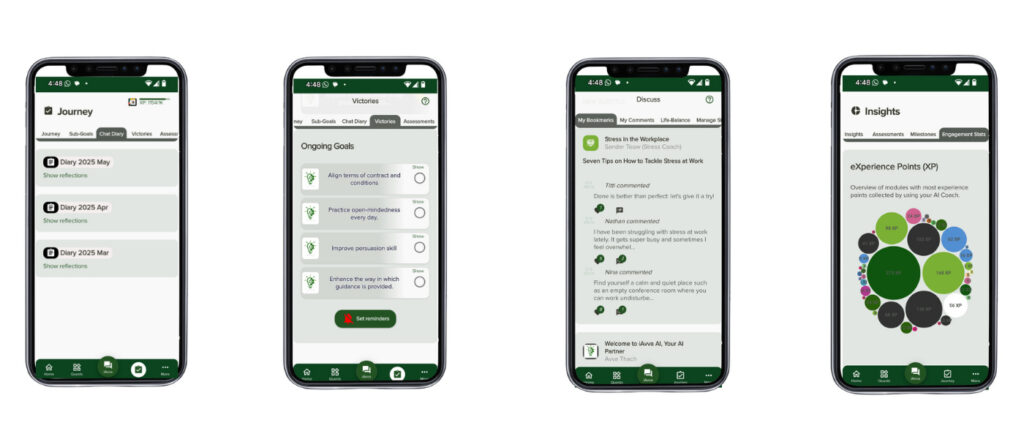The Medical Billing Revenue Cycle Management (RCM) process is a critical component of healthcare finance, encompassing the entire lifecycle of a patient’s account from registration to final payment. It begins when a patient schedules an appointment and continues through the stages of service delivery, billing, and payment collection. The RCM process is not merely a back-office function; it is an intricate system that directly impacts a healthcare provider’s financial health and operational efficiency.
Understanding this cycle is essential for healthcare organizations aiming to optimize their revenue streams and ensure sustainability in an increasingly complex regulatory environment. At its core, RCM involves a series of interconnected steps that require meticulous attention to detail and coordination among various departments. From patient registration to claims submission and payment posting, each phase plays a vital role in ensuring that healthcare providers receive timely and accurate reimbursement for services rendered.
The complexity of the RCM process is compounded by the diverse range of payers, each with its own policies and requirements. As such, a comprehensive understanding of RCM is crucial for healthcare organizations to navigate the challenges of billing and collections effectively.
Key Takeaways
- Medical Billing Revenue Cycle Management (RCM) involves multiple stages from patient registration to payment reconciliation.
- Key components include patient registration, insurance verification, coding, claims submission, and denial management.
- Technology and automation play a crucial role in improving RCM efficiency and reducing errors.
- Effective RCM strategies help minimize claim denials and streamline appeals processes.
- Staying updated with regulatory changes and industry trends is essential for future-proofing RCM operations.
Identifying Key Components of the RCM Cycle
The RCM cycle consists of several key components that work together to facilitate the financial operations of healthcare providers. These components include patient registration, insurance verification, coding, claims submission, payment posting, and accounts receivable management. Each element is interdependent, meaning that inefficiencies in one area can lead to significant delays and revenue loss in others.
Identifying these components is the first step toward optimizing the entire RCM process. Patient registration is the initial touchpoint in the RCM cycle, where accurate data collection is paramount. This stage sets the foundation for subsequent processes, as any errors or omissions can lead to complications down the line.
Following registration, insurance verification ensures that the patient’s coverage is active and that the services provided will be reimbursed. Coding is another critical component, as it translates medical services into billable codes that payers recognize. Each of these components must be executed with precision to minimize delays and maximize revenue.
Streamlining Patient Registration and Insurance Verification

Streamlining patient registration and insurance verification is essential for enhancing the efficiency of the RCM process. A well-organized registration process not only improves patient satisfaction but also reduces administrative burdens on staff. Implementing user-friendly online registration forms can facilitate accurate data entry while minimizing wait times for patients.
Additionally, training staff to effectively communicate with patients about required information can further enhance the registration experience. Insurance verification is equally important, as it determines the financial responsibility of both the patient and the provider. Automating this process through integrated software solutions can significantly reduce manual errors and expedite verification times.
By leveraging technology to cross-check insurance details in real-time, healthcare organizations can ensure that they are providing services covered by the patient’s plan, thereby reducing the risk of claim denials later in the cycle.
Maximizing Efficiency in Coding and Documentation
| Metric | Description | Typical Value | Best Practice |
|---|---|---|---|
| Code Reuse Percentage | Percentage of code reused from existing libraries or modules | 30-50% | Increase reuse by modularizing code and using libraries |
| Documentation Coverage | Percentage of codebase with up-to-date documentation | 60-80% | Maintain inline comments and update docs regularly |
| Code Review Time | Average time spent reviewing code per 1000 lines | 2-4 hours | Use automated tools and checklists to speed reviews |
| Bug Rate | Number of bugs per 1000 lines of code | 5-15 bugs | Write tests and document edge cases thoroughly |
| Automated Test Coverage | Percentage of code covered by automated tests | 70-90% | Implement unit and integration tests consistently |
| Average Time to Understand Code | Time taken for a new developer to understand a module | 1-3 days | Use clear naming conventions and comprehensive docs |
| Documentation Update Frequency | How often documentation is updated relative to code changes | 90% of code changes | Integrate documentation updates into development workflow |
Maximizing efficiency in coding and documentation is crucial for ensuring accurate billing and compliance with regulatory standards. Coding professionals must be well-versed in the latest coding guidelines and updates to avoid costly errors that can lead to claim denials or audits. Regular training sessions and access to coding resources can empower coders to stay informed about changes in coding practices.
Moreover, documentation plays a pivotal role in supporting coding accuracy. Healthcare providers must ensure that clinical documentation is thorough and precise, as it serves as the basis for coding decisions. Implementing standardized templates for documentation can help streamline this process, ensuring that all necessary information is captured consistently.
By fostering a culture of collaboration between clinical staff and coders, organizations can enhance the quality of documentation and improve overall coding efficiency.
Optimizing Claims Submission and Tracking
Optimizing claims submission and tracking is essential for accelerating cash flow and reducing days in accounts receivable. The claims submission process should be automated wherever possible to minimize human error and expedite processing times. Utilizing electronic claims submission systems allows for quicker transmission of claims to payers, which can lead to faster reimbursements.
Tracking claims effectively is equally important, as it enables organizations to identify trends in denials or delays. Implementing robust tracking systems allows for real-time monitoring of claims status, providing insights into potential issues before they escalate. By analyzing claims data, healthcare organizations can pinpoint areas for improvement and develop targeted strategies to enhance their submission processes.
Improving the Process of Payment Posting and Reconciliation

Improving the process of payment posting and reconciliation is vital for maintaining accurate financial records and ensuring timely revenue recognition. Payment posting involves recording payments received from patients and insurers against outstanding accounts, while reconciliation ensures that all payments are accounted for accurately.
Automating payment posting through integrated billing systems can minimize manual entry errors and speed up the reconciliation process. By implementing electronic remittance advice (ERA) systems, healthcare organizations can automatically match payments with corresponding claims, reducing discrepancies and improving cash flow management. Regular audits of payment posting processes can also help identify areas for improvement, ensuring that financial records remain accurate and up-to-date.
Reducing Denials and Appeals Through Effective RCM Strategies
Reducing denials and appeals is a critical focus area within the RCM process, as claim denials can lead to significant revenue loss for healthcare providers. Effective RCM strategies must be implemented to address common denial reasons proactively. This includes thorough training for staff on payer requirements and ensuring that all necessary documentation is submitted with claims.
Establishing a denial management team can also be beneficial in addressing denied claims promptly. This team should analyze denial trends to identify root causes and develop targeted interventions to prevent future occurrences. By fostering a culture of accountability and continuous improvement within the organization, healthcare providers can significantly reduce denial rates and enhance overall revenue cycle performance.
Leveraging Technology and Automation for RCM Efficiency
Leveraging technology and automation is essential for enhancing RCM efficiency in today’s fast-paced healthcare environment. Advanced software solutions can streamline various aspects of the RCM process, from patient registration to claims management. By automating repetitive tasks, organizations can free up valuable staff time to focus on more strategic initiatives.
Additionally, data analytics tools can provide insights into key performance metrics, enabling organizations to make informed decisions about their revenue cycle operations. By harnessing technology effectively, healthcare providers can improve accuracy, reduce administrative burdens, and ultimately enhance their financial performance.
Enhancing Patient Engagement and Financial Responsibility
Enhancing patient engagement is crucial for fostering financial responsibility among patients. Educating patients about their financial obligations before services are rendered can lead to better payment outcomes. Providing transparent estimates of costs upfront allows patients to make informed decisions about their care while also setting clear expectations regarding their financial responsibilities.
Implementing patient portals can further enhance engagement by allowing patients to access their billing information online, view statements, and make payments conveniently. By fostering open communication with patients regarding their financial obligations, healthcare organizations can improve collections while also enhancing patient satisfaction.
Implementing Best Practices for RCM Performance Metrics and Reporting
Implementing best practices for RCM performance metrics and reporting is essential for measuring success and identifying areas for improvement. Key performance indicators (KPIs) such as days in accounts receivable, claim denial rates, and net collection rates should be regularly monitored to assess the effectiveness of RCM strategies. Regular reporting on these metrics allows organizations to track progress over time and make data-driven decisions about resource allocation and process improvements.
By establishing a culture of accountability around RCM performance metrics, healthcare providers can ensure that they are continuously striving for excellence in their revenue cycle operations.
The Future of RCM: Adapting to Regulatory Changes and Industry Trends
The future of RCM will undoubtedly be shaped by ongoing regulatory changes and evolving industry trends. As healthcare continues to shift towards value-based care models, organizations must adapt their RCM strategies accordingly. This may involve re-evaluating reimbursement structures, enhancing care coordination efforts, and investing in technology that supports value-based initiatives.
Moreover, staying abreast of regulatory changes will be crucial for compliance and financial sustainability. Healthcare organizations must remain agile in their approach to RCM, continuously assessing their processes against industry standards and best practices. By embracing innovation and fostering a culture of adaptability, healthcare providers can position themselves for success in an ever-changing landscape.
In conclusion, optimizing the Medical Billing Revenue Cycle Management process requires a multifaceted approach that encompasses understanding key components, streamlining operations, leveraging technology, enhancing patient engagement, implementing best practices, and adapting to future trends. By focusing on these areas, healthcare organizations can improve their financial performance while delivering high-quality care to patients.
The medical billing revenue cycle management (RCM) is a critical aspect of healthcare operations, ensuring that providers are compensated for their services efficiently. For organizations looking to enhance their RCM processes, understanding the role of technology and innovation is essential. A related article that delves into the importance of managing risk and leveraging AI for future-ready organizations can be found here: AI at Scale: Managing Risk for Future-Ready Organizations. This resource provides valuable insights that can help healthcare providers optimize their billing practices and improve overall financial performance.
FAQs
What is the medical billing RCM cycle?
The medical billing RCM (Revenue Cycle Management) cycle is the process healthcare providers use to track patient care episodes from registration and appointment scheduling to the final payment of a balance. It involves all administrative and clinical functions that contribute to the capture, management, and collection of patient service revenue.
What are the main stages of the medical billing RCM cycle?
The main stages include patient registration, insurance verification, charge capture, claim submission, payment posting, denial management, and patient billing. Each stage is crucial for ensuring accurate billing and timely reimbursement.
Why is insurance verification important in the RCM cycle?
Insurance verification confirms a patient’s coverage and benefits before services are rendered. This step helps prevent claim denials and ensures that the provider will be reimbursed for the services provided.
What role does claim submission play in the RCM cycle?
Claim submission involves sending the healthcare provider’s charges to the insurance company for payment. Accurate and timely claim submission is essential to avoid delays and denials in reimbursement.
How are denials managed in the medical billing RCM cycle?
Denial management involves identifying, analyzing, and correcting errors that caused claim denials. Providers then resubmit corrected claims or appeal denials to recover revenue.
What is the importance of payment posting in the RCM cycle?
Payment posting records payments received from insurance companies and patients. It helps reconcile accounts, track outstanding balances, and identify any discrepancies that need resolution.
How does patient billing fit into the RCM cycle?
After insurance payments are processed, any remaining balance is billed to the patient. Effective patient billing ensures clear communication about amounts owed and facilitates timely payment.
What are common challenges in the medical billing RCM cycle?
Common challenges include claim denials, delayed payments, inaccurate patient information, complex insurance policies, and regulatory compliance issues. Addressing these challenges is key to optimizing revenue.
How can technology improve the medical billing RCM cycle?
Technology such as electronic health records (EHR), practice management software, and automated billing systems can streamline processes, reduce errors, improve claim accuracy, and accelerate payment cycles.
Who is responsible for managing the medical billing RCM cycle?
Typically, medical billing specialists, coders, and revenue cycle managers within a healthcare organization oversee the RCM cycle. Some providers also outsource these functions to specialized billing companies.





















Leave a Reply